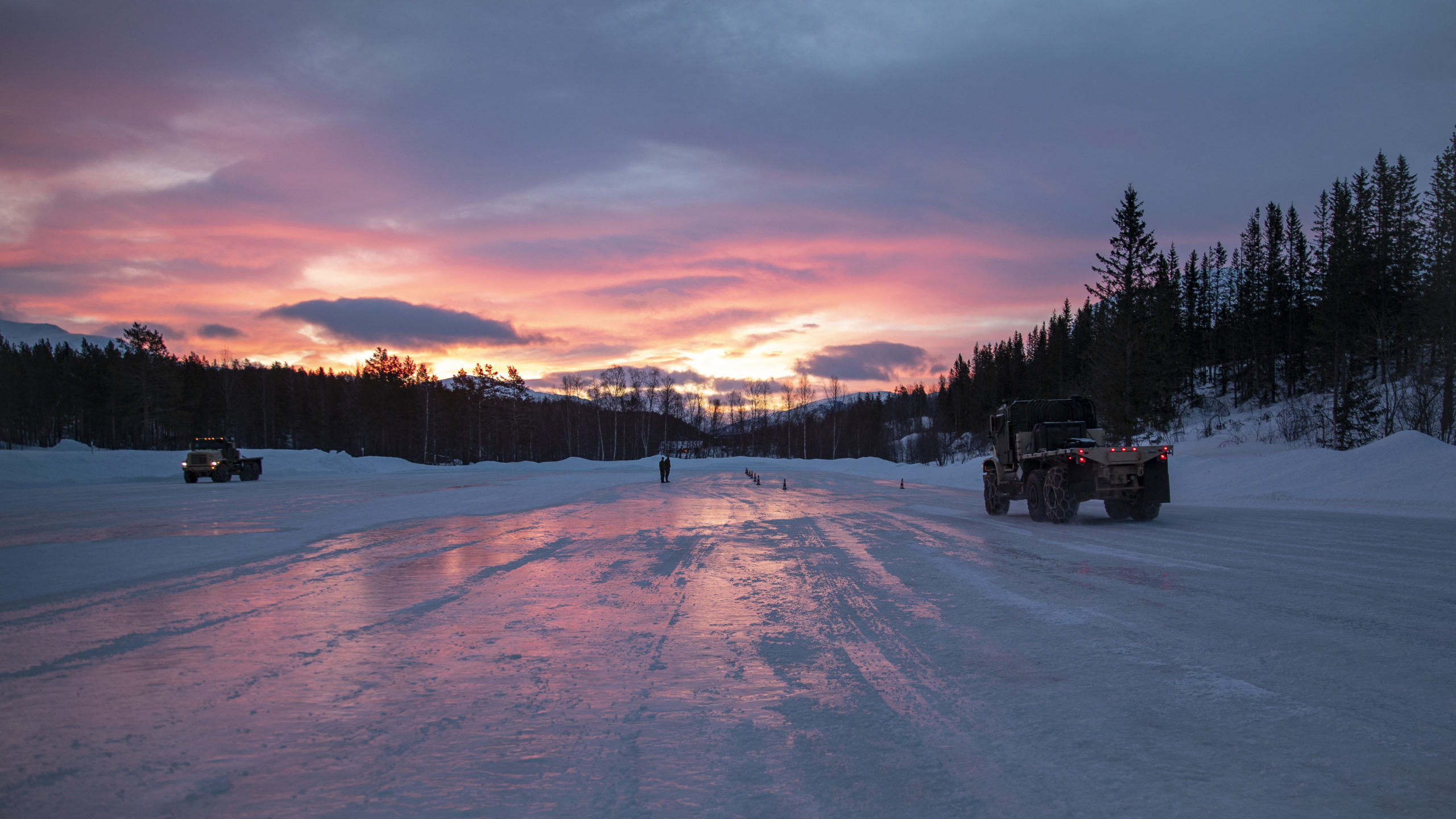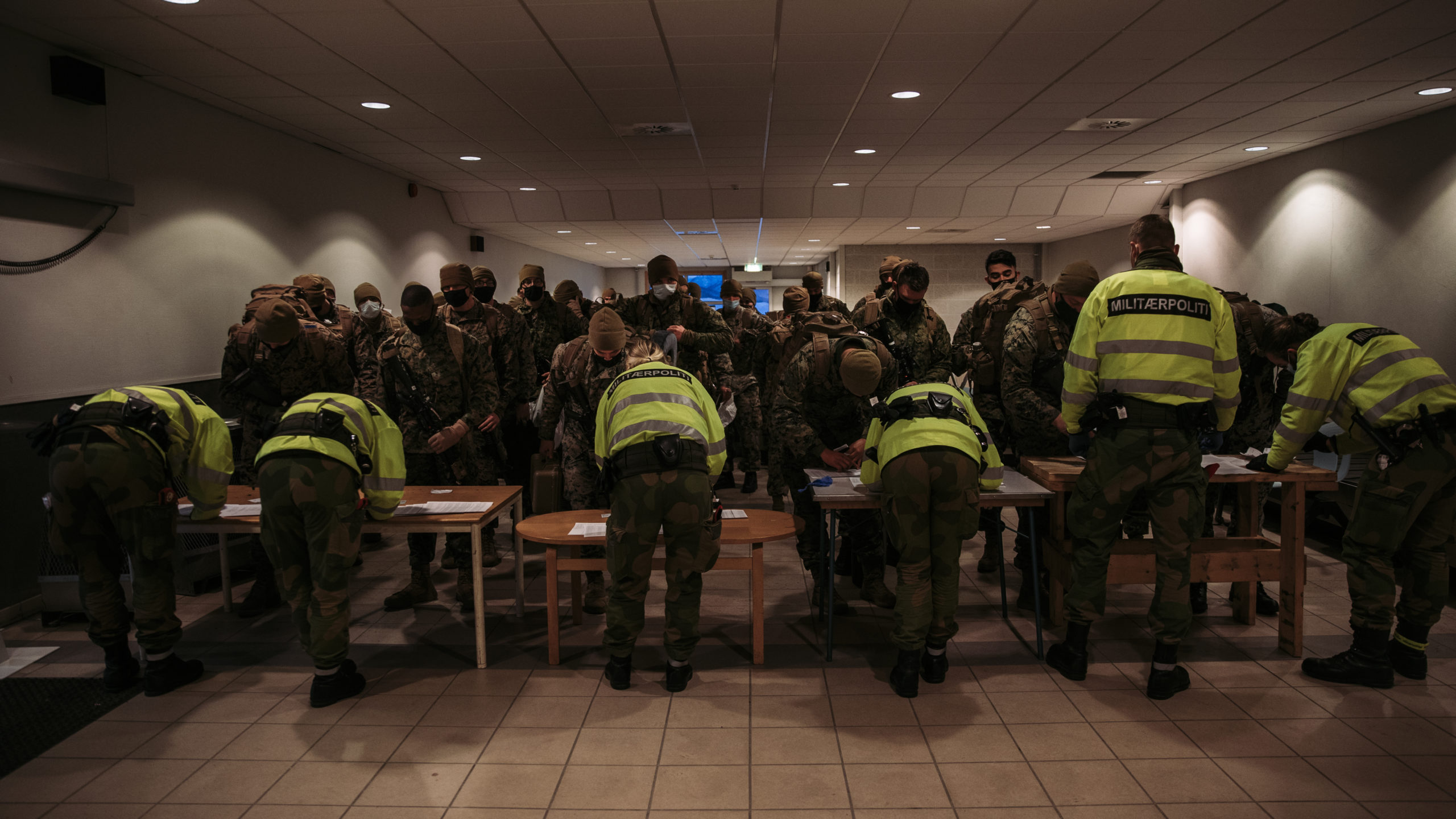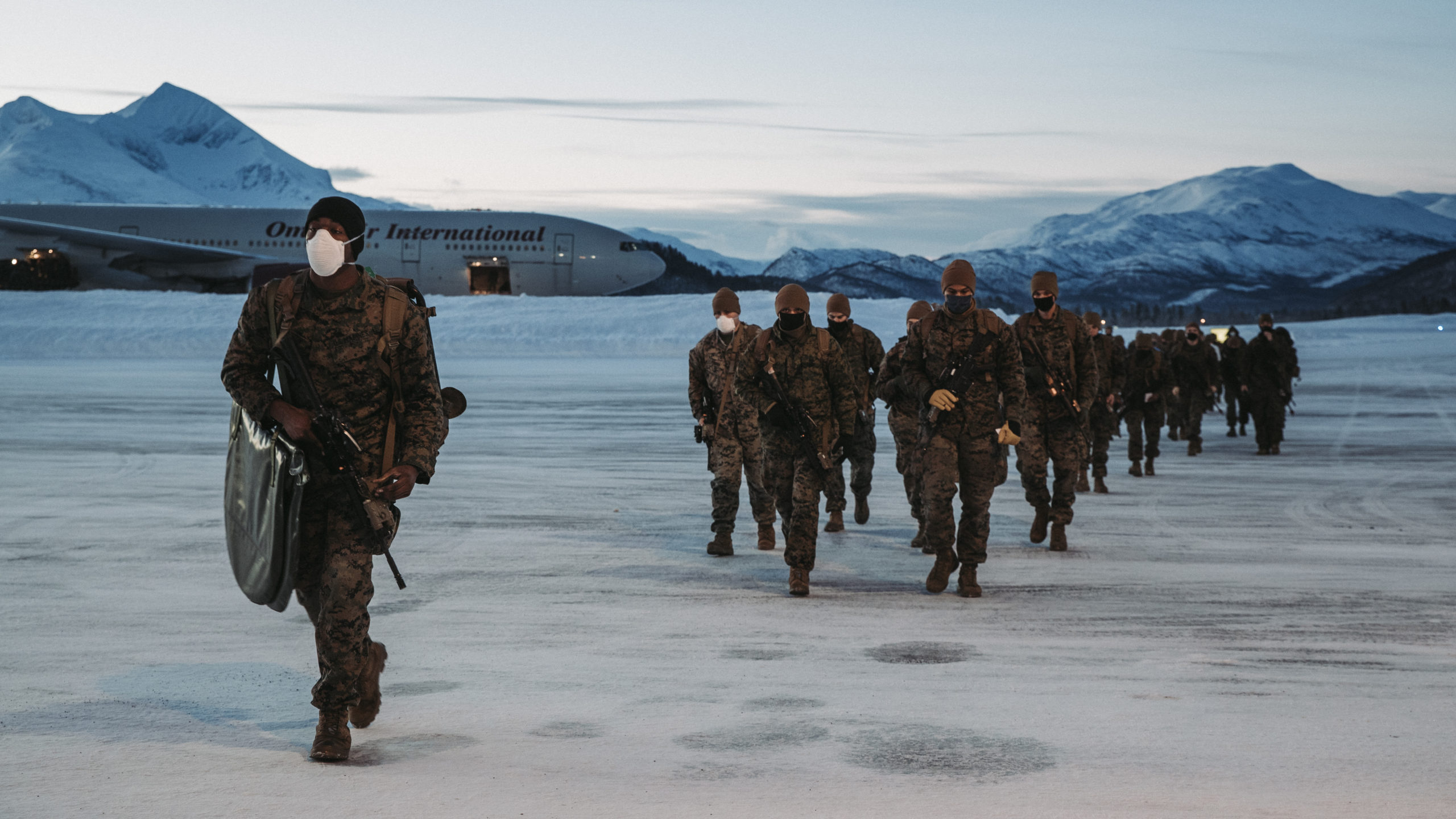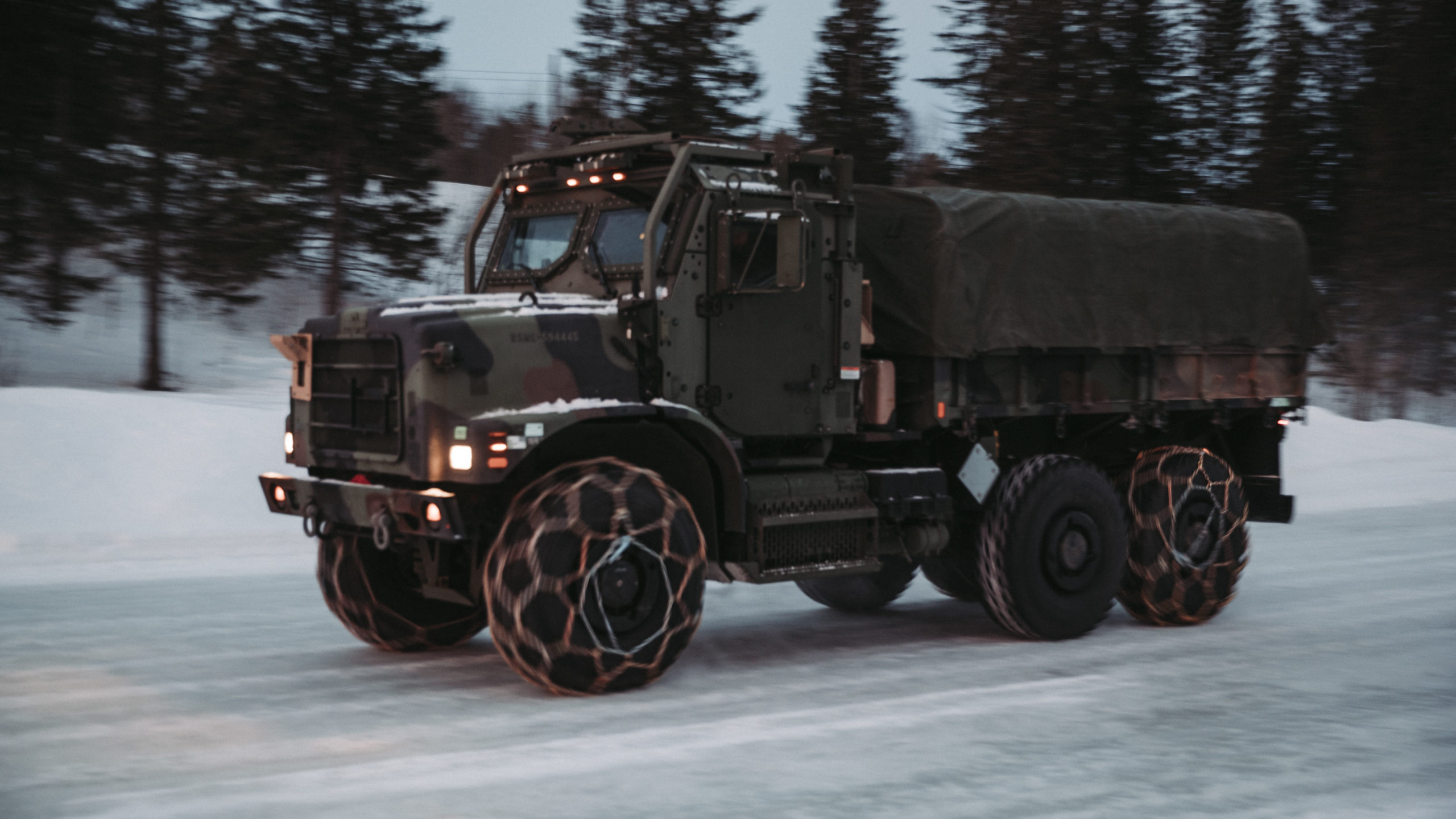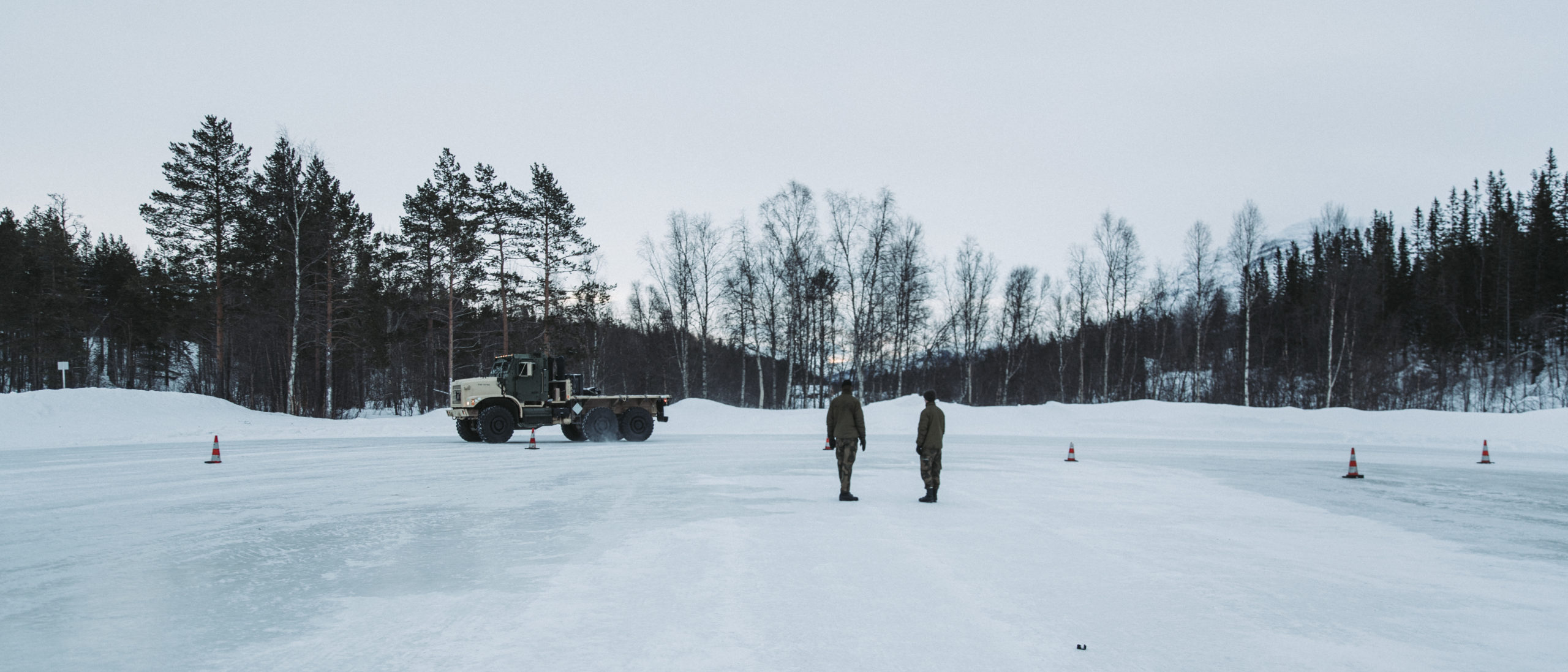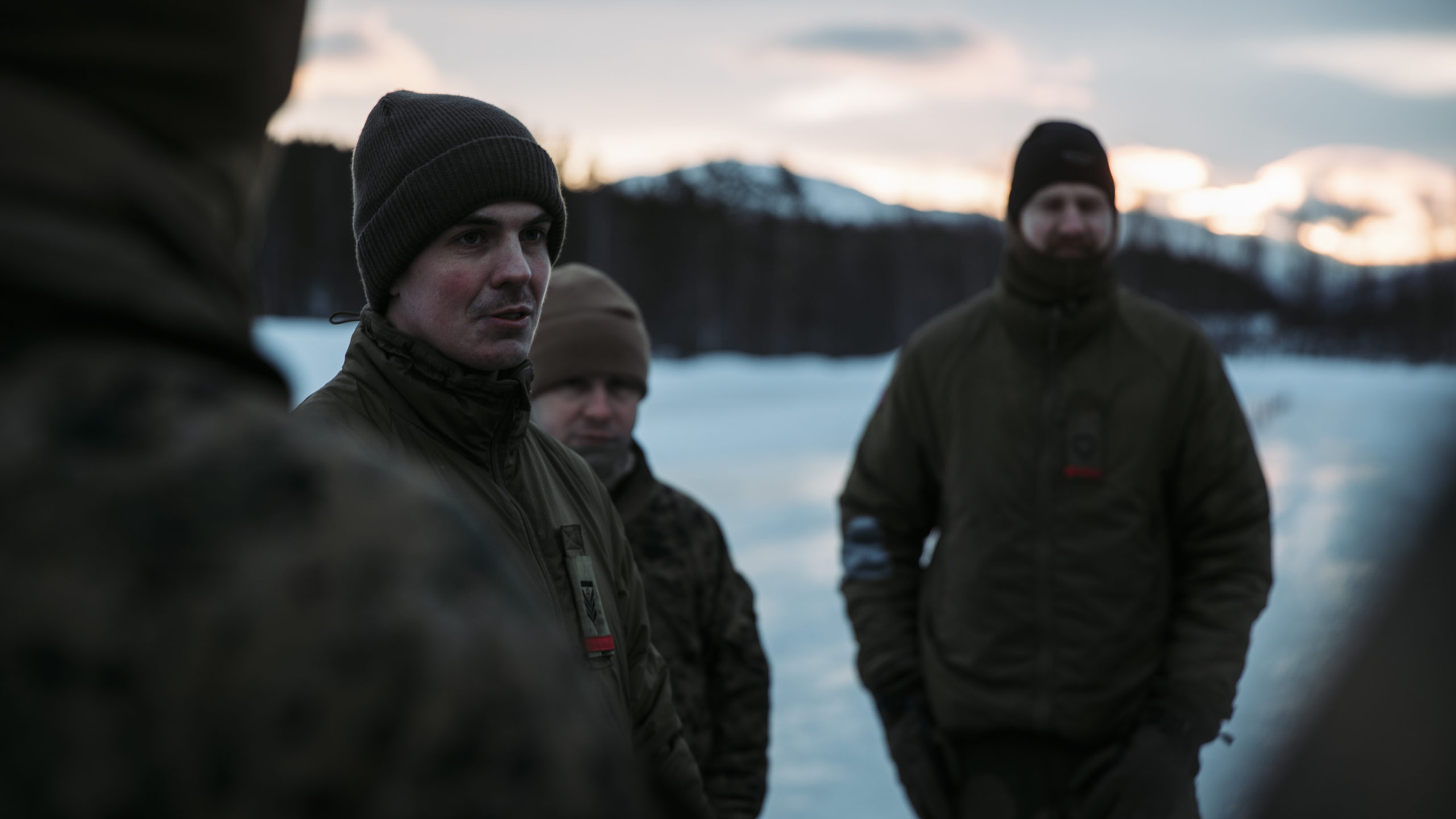By Robbin Laird
During a visit to 2nd Marine Air Wing last summer, I met with Marine Air Group 26.
During that visit we discussed the transition from the land wars, which included the need for more focus on the Northern Flank of NATO.
Certainly, the current European crisis has underscored the importance of such an effort.
This is what I wrote after my meeting with the MAG-26 team:
During my recent visit, I had a chance to discuss the way ahead for combat assault support with three members of MAG-26. Maj. Mazzola is MAG-26 Operations Officer. Maj. Kevin O’Malley is assigned to Marine Medium Tiltrotor Squadron 263 (VMM-263), an operational MV-22 squadron, and Maj. Tom Gruber is a member of VMM-365. We focused on the challenges of transition from the Middle East land wars as well as the work on shaping a new way ahead for the assault force.
Up front, the shift was described by one participant as “A total paradigm change.”
2nd MAW Marines will perhaps lessen expeditionary operations in Mesopotamia and increase engagements in the North Atlantic area operations.
In fact, the Marine Corps has already made gains towards this goal.
Since 2018, focus on specific challenges such as cold weather training and exercises have increased at a pace not witnessed since the Cold War.
Case in point, one interviewee noted that in March 2022, they would once again train with the Norwegians in the Cold Response—one of the largest Norwegian and Coalition exercise since the Cold War.
This is how that exercise is described by one source:
“About 40,000 soldiers will participate in Norway’s Cold Response 2022 exercise next year, planned to take place in the Ofoten area with the country’s navy and air force as the main players in the war game. “There is a significantly increased interest among our allies for the north and the Arctic,” said General Eirik Kristoffersen, head of the Norwegian Armed Forces in a phone interview with the Barents Observer. In times of growing distrust between Russia and Europe, Norway seeks to build its security in partnership with NATO allies and Nordic neighbors.
“That includes more joint military training up north. Now, the Armed Forces are revealing more details about next year’s planned large-scale winter exercise.
“As it seems today, we will have about 40,000 soldiers in exercise Cold Response,” Kristoffersen said. “It will be the largest military exercise inside the Arctic Circle in Norway since the 1980s,” the general added.
“Cold Response 2022 will train reinforcement of northern Norway, and the main action will be by navy and air force capacities in the Ofoten area. The region is near to the Army’s northern brigade and training areas where U.S., British and Dutch soldiers frequently drill in Arctic warfare.
“Ofoten is also home to Evenes airport where Norway’s new fleet of P8 Poseidon maritime surveillance planes will be based together with NATO’s two northernmost Quick Reaction Alert F-35s fighter jets on standby to meet Russian military planes flying near Norwegian air space. For NATO and the Nordic countries’ defense partnership, Ofoten is of core strategic importance in case of a larger global conflict involving Russia in the North-Atlantic. The area is about 600 kilometers from the Kola Peninsula where the Northern Fleet’s nuclear submarines are based.”
As the Marine Corps conducts force design, they must figure out how to supply that force.
For example, when operating in the Mediterranean, the Ospreys can fly to several support facilities.
This will not be the case when operating in an environment like the North Atlantic.
This means working the logistical support challenge with the Navy to provide for afloat support and to work on pre-positioning of supplies and work the arc from North America to the Baltics.
How will the supply chain to support North Atlantic operations be shaped going forward?
Clearly, the renewed focus on naval integration is part of the answer.
This will be a function of how the Navy reworks its own logistical support; this will be a function of how ashore support is built out in the region (the arc from North Carolina to the Baltics) and how the amphibious fleet is reshaped.
Clearly, the coming of maritime autonomous systems can be part of evolving support solution sets.
As one participant put it: “Perhaps the supply shortfall can be mitigated by logistical movers. Having unmanned aircraft or unmanned surface vessels will undoubtedly be able to contribute going forward.”
There is clearly a shortage of amphibious shipping both in terms of combat ships and connectors for the North Atlantic mission against a peer competitor.
We did not discuss the broader challenge which can be referred as shaping a new family of systems to deliver the amphibious warfare capability to the extended littoral engagement in the North Atlantic, but this is a key challenge which must be met going forward.
Another aspect being worked is how to integrate the ARG-MEU in wider fleet operations.
The Marines and the Navy are working exercises in the North Atlantic to find ways to do so, and the recent BALTOPS-50 did provide some insight with regard to this.
And the evolving relationship between 2nd Expeditionary Strike Group and II MEB will clearly focus on this challenge.
An aspect of the way ahead for the ARG-MEU is its participation in fleet defense and shaping ways the amphibious force can better defend itself afloat.
The F-35 has already demonstrated in the Pacific that it can contribute significantly in this role and with the F-35 coming to 2nd MAW’s operational force, it can play a similar role in the Atlantic.
But given the nature of the arc from North Carolina to the Baltics, allied F-35s will play a key role in all of this, as has already been demonstrated in BALTOPS-50 with the role of Norwegian F-35s.
The participants indicate that indeed they are engaged in discussions with the Navy about how to better integrate capabilities for the extended littoral operational fight.
As one participant highlighted: “As the Navy focuses on integration of their fleet operations, they want to be able to use all of the assets available to them.
“And that is why the MEU is now part of the discussion.”
One key question which is a shaping function moving ahead was posed by one participant this way: “How does the Air Combat Element (ACE) participate effectively in defense of the amphibious force?”
Deputy Commandant for Aviation, Lt. Gen. Mark Wise, is noted as saying that “the Marine Corps as an expeditionary force must be agile, mobile, and survivable. That means looking to, and building upon, current warfighting philosophy and our way of doing business.
“This vision is built around distributed maritime operations, littoral operations in a contested environment, and expeditionary advanced based operations: DMO, LOCE, and EABO.
“The Marine Corps will not abandon, but rather will refine and improve upon, these concepts for operational design for a littoral fight.”
Now they are engaged in the exercise, and in the article are some early photos from their engagement.
For my look at the USMC transformation path, see my new book, published last week:


